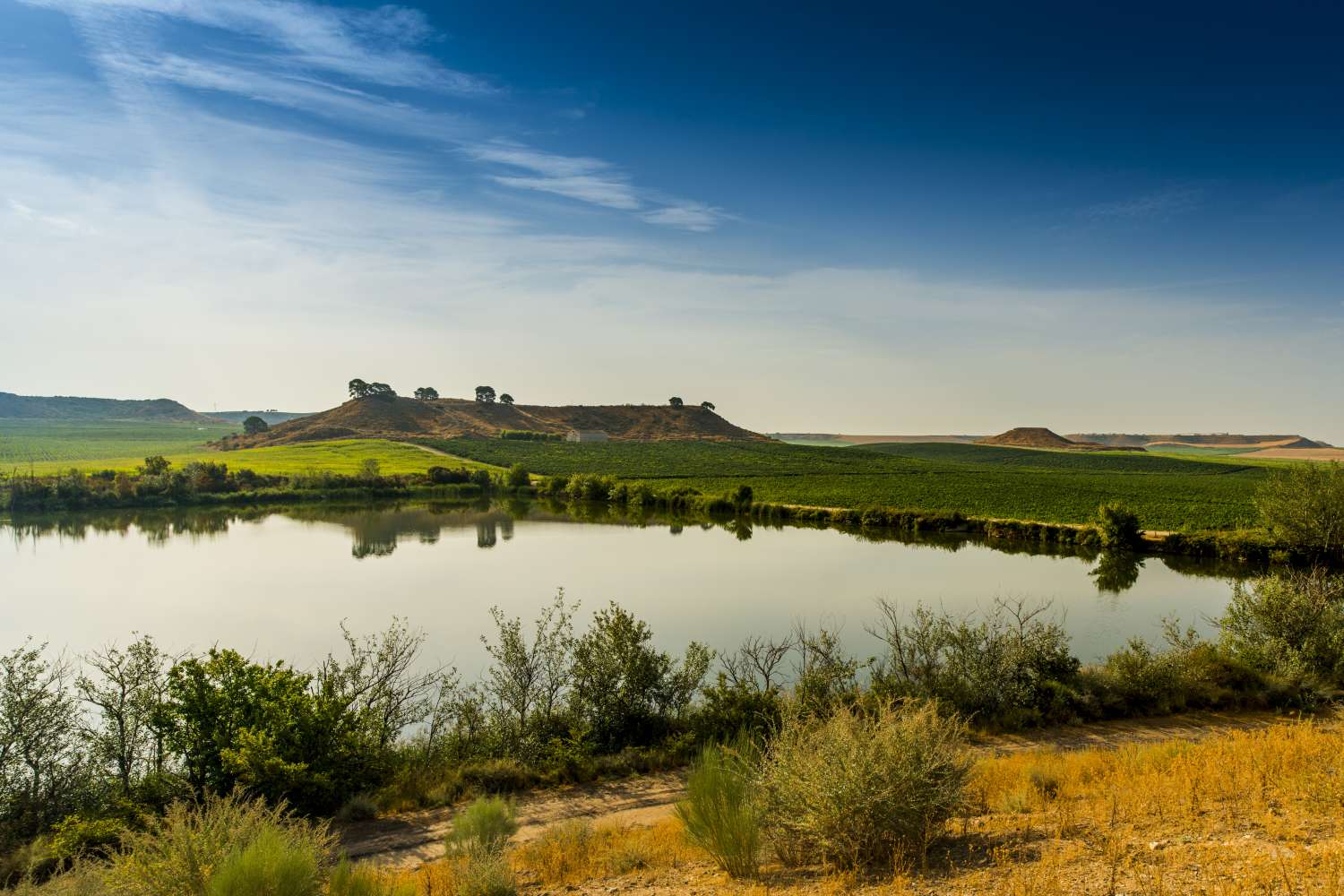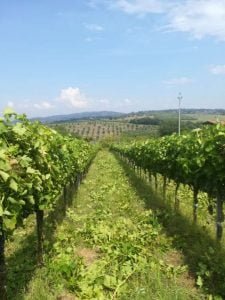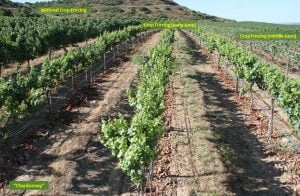Raimat – VISCA (Vineyard Integrated Smart Climate Application)
COMPANY SUMMARY
Raimat wine cellar is located in a region called Costers del Segre in the southwest slope of Raimat hills, Spain.
This location confers special and differentiated characteristics: higher sunlight exposure in the afternoon, which allows the grapes to accumulate more degree days, achieving an earlier ripening without losing acidity. These are well drained soils; the slight inclination of the fields confers a natural draining of the rain water. Being on the slope of the hill causes steady currents of air, which provides a natural cooling down, conferring a special microclimate. The viticulture performed is ecological, where the green pruning is especially important: buds and leaves thinning is used to adjust the vine´s productive-vegetative equilibrium. The soil keeps a vegetal cover that contributes to increase the biodiversity, plus controlling the erosion of the soil.

EXECUTIVE SUMMARY
The main objective of VISCA is making European wine industries resilient to climate changes, while minimizing costs and risks through an improvement of the production management (quality and quantity of final product), as well as evaluating its replicability to other high-added value agriculture sectors. The integration of climatic and phenological data supplied by three demo core groups into a Decision Support System (DSS) tool, co-designed with relevant South-European wine companies – capable of supplying well-founded decisions for an appropriate crop planning (i.e. pruning, ripening, harvesting, fertilization, pest-control, etc).
START TO END
2016 to 2020
SUSTAINABLE TARGET
- Development of a tool (DSS) that supplies climate-informed decisions to the wine industry
- Demonstration of the strategic adaptation decisions supplied by this tool in three areas where wine business is most sensitive to climate change (Spain, Italy and Portugal)
- Definition of an action plan to tackle barriers and opportunities derived from the full deployment of VISCA on the 3 demo areas.
- Evaluation of the replicability potential in other relevant sectors (forestry, food security, etc.) at international level.
REASON WHY/MOTIVATION/BACKGROUND
Because of climate change, grape ripening occurs on hotter conditions year after year, having a negative impact in wine quality. By delaying ripening to colder conditions, wine quality may be improved without need to move vineyards to other latitudes. Managing the technique is the most important issue to be solved.
PROJECT DESCRIPTION
To start using VISCA DSS (Decision Support System, a Progressive Web Application) a viticulturist has to upload essential data about his vineyard, namely parcel location and size, desired sugar level at harvest, aimed water stress level at the different phenological stages, grape varieties and the cultivation interventions he performs.
In addition, the grower needs to upload irrigation data. He/she can also connect the DSS to a local weather station which will feed the tool automatically with weather information inputs. This allows the DSS to adapt the phenological development model not only according to the climate projections, but also according to the performed cultivation interventions which facilitate the decision-making skills of the users.
Accordingly, the viticulturist applies different actions in the field, in terms of irrigation, planting, harvest, etc. VISCA DSS proposes two agronomic techniques for climate change adaptation.

One is shoot trimming which is a pruning technique for vineyards to decrease leaf to fruit yield ratio to slow down carbon partitioning to berries and therefore sugar accumulation.
The other one is crop forcing which is based on shifting the grape-ripening period from hot summer months to cooler months later in the growing season.

This is achieved by making an additional pruning, stopping the natural cycle of the plant and “forcing” it to restart its cycle later.
One of the main obstacles is to decide when to apply the additional pruning. One goal of VISCA is to have enough accurate models to predict plant behavior after this sever summer pruning (based on accurate predictions of meteorological data), which will help to determine the appropriate moment to apply the additional pruning.
In order to develop these models, different field experiments are implemented.
These treatments are necessary to analyze vine phenological evolution, and with this data to feed the models.
BENEFITS/ACHIEVEMENTS
- Better quality wines
- In addition to improving wines, this technique can contribute to minimize impact from frosts and extreme diseases occurrence.
- Disease control – Additional Sulphur dust application. As result, improved sanity of the grapes at harvest. a small growth in yield of c.11% (c.310 kg/ha) with increase of product value from 0.8 to 1.0€/kg and increase of wine price of +240% on VISCA management plotOther VISCA benefits in general:
- Irrigation management: Average of 18.5% reduced applied water, 18.5% reduced water cost and +116% in terms of water productivity for plots under VISCA management
- Basal leaf removal – No big difference recorded even if not performed, resulting in savings of c. 700€/ha deriving from 60h of labour. Small increase of +7% in yield (c.360kg/ha)
- Shoot trimming – No difference recorded in terms of yield. Yet, increase of product value from 0.7 to 0.9 €/kg. This translate in increase of +28% value of grapes.
Results on the implementation of crop forcing can be observed in the figures below. The crop forcing allowed a significant delay on the harvest, which varied between 21 and 77 days depending on the crop forcing date. The shift of harvest date had a direct effect on the berry quality traits, with a positive correlation between the increase in acidity and the delay on harvest -without compromising the sugar content in the berry.
LESSONS LEARNED
Crop forcing may be a very useful tool to delay harvest and to ripen fruit under cool conditions. Now it is important to adjust forcing time to ripen the fruit under controlled conditions. Therefore, climate prediction is one of the key issues.
Forcing a regrowth of the buds when a new vine cycle starts and ripening conditions occur much later in the season, under cooler conditions. Thus, ripening is slower, acids and flavors are better maintained in wines.
NEXT STEPS
Commercialization of the DSS developed. VISCA Decision Support System (DSS) is a Progressive Web Application that can be viewed or executed using any recent major browser version (e.g. Chrome, Firefox, Safari or Edge). It can be accessed from multiple devices: computers, tablets or smart phones. The aim of VISCA DSS is to integrate climate and agricultural models with farmers’ management specifications in order to design short practices, medium- and long-term adaptation strategies to climate change.
POTENTIAL FOR REPLICATION
To understand the potential of VISCA DSS replicability, VISCA consortium has been assessing the required adaption of the DSS or its further development based on the main components (phenology widgets, irrigations widgets and weather information forecasts widgets). Depending on the type of crop, and location of the replicability site(s), different actions will be required to adjust the DSS. Full assessment of the possible replicability options of VISCA is provided in ‘Deliverable 5.4: Report on replicability and associated funding mechanisms’ available on VISCA website (Dissemination: Scientific Publication and Deliverables)
PARTNERS
- METEOSIM
- IRTA
- UNIVERSITY OF OPORTO
- RAIMAT-CODORNIU
- SYMINGTON FAMILY ESTATES
- MASTROBERARDINO
- BARCELONA SUPERCOMPUTING CENTER
- ISMB
- UNIVERSIDAD DE NAPOLI
- SEMIDE
- ALPHA CONSULT

